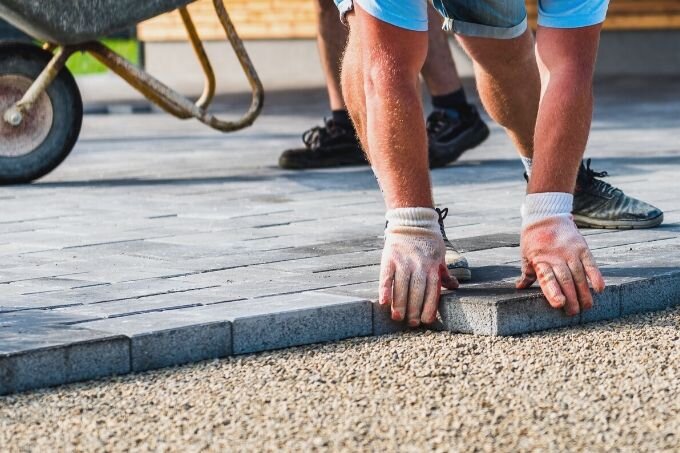Considerations When Planning a Driveway Paving Project
Assessing the state of your home’s overall appearance and deciding what to spruce up, pare down, eliminate, or add is part of the equation before listing residence for sale. The parking and garage area are among the first things prospective buyers will see. Here are considerations when planning a driveway paving project.
Budget and Materials
Driveways can be paved with gravel, stained concrete, asphalt, stone, or brick. Each has benefits and drawbacks, but cost will probably be your main determining factor. Each has benefits and drawbacks, but cost will probably be your main determining factor. Gravel is the cheapest, while brick and stone are costly. Professionals should install concrete, asphalt, and stone or brick pavers. However, some experienced DIYers may get away with creating a concrete drive on their own. Nowadays, you can find a wide range of concrete tools including the big blue easy float online so if you are thinking about taking on your driveway paving project yourself, doing some research can help you to plan your next steps.
Maintenance
Different materials need various types of maintenance. For instance, tarmac often develops potholes and other damage over time, so having a reliable tarmac contractors available for upkeep can be very useful.
Think about the climate in your location. While gravel is cheap and relatively easy to install, it’s a headache for snowplows. It can also develop potholes. Concrete is easier to plow, but can develop cracks after repeated rounds of freezing and thawing. Asphalt can survive snowplowing but must be re-sealed every few years. Asphalt, concrete, brick, and stone all could stain, while gravel kicks around and you’ll have to sweep it back into place and replenish it from time to time. Think about how much time and effort you are willing to invest in keeping a new driveway looking nice while you think about listing your home.
Style, Design, and Fit
It’s usually not a good idea to make your house look way out of range of the other houses in your neighborhood. An expensive brick or stone drive looks odd when surrounded by gravel and concrete drives on either side and across the street. A gravel drive looks a bit, shall we say, rustic next door to stone pavers. You can add a little personality to your driveway—a brick or stone edging adds a little interest—without looking like you intend to overprice your house. Additionally, blacktop driveway paving is often an affordable option that complements various architectural styles, providing a polished look that integrates well with neighboring properties.
If your driveway is in front of your house, it should integrate nicely with your gardens and walks. Think about the practical matter of pulling in and out of the driveway. A lazy lane is easier to back onto than a busy, four-lane, divided street. If you have the space, your driveway design might accommodate a t-shaped area as a way to turn around. If you have a one-car garage but two cars, one of those cars will need a pad to the side of the drive to keep out of the way of the car that lives in the garage. Limited space limits your design options, but if you have the room, curves are more interesting than straight lines.
Drainage and Sustainability
Many newer paving materials are permeable to allow rainwater to soak through. Some types of paver installations allow decorative, low-growing herbs, grass, or moss to populate the spaces between blocks. If permeable materials won’t work for your installation, or even if they will but you get a lot of rain, you must consider proper drainage. The drive should pitch gently away from the house to allow runoff into a trench drain, slot drain, catch basin, or swale, and from there into a storm sewer or other acceptable drainage area. Some newer or expanded homes have garages on the lower level and driveways that slope down. Proper drainage is critical in such installations.
Upping your home’s curb appeal may not require planning an entirely new driveway paving project. Concrete might get a fresh look with a good power washing, and a professional paving company can re-seal asphalt and make it look new.

















